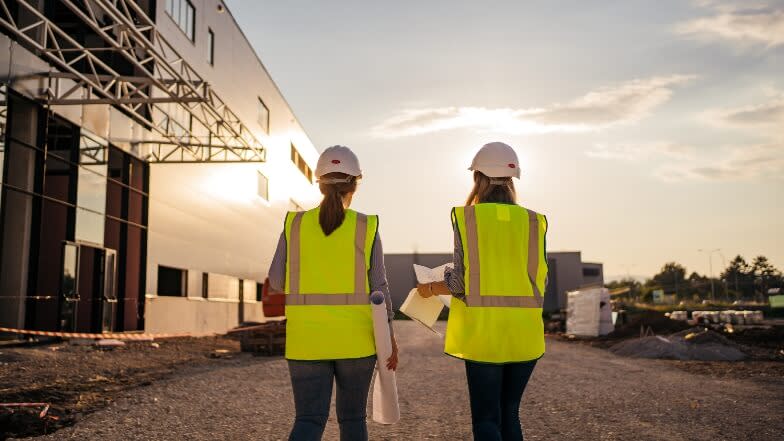
Article
The problem solving potential of sustainable construction
It’s hard not to be reminded daily of the urgency of the climate crisis. Especially for those of us working in construction.

Construction has a major impact on the world’s environment. In the EU in 2020, construction waste accounted for 25-30% of the total waste generated. A figure drastically out of step with the fact that less than 1% of building projects quantify the scale and source of their carbon emissions.
Chapter 1
Construction must do more to meet its goals
There has been progress, with the CLC’s CO2nstructZero campaign encouraging over 80 organisations to share best practice about reducing carbon – a sure sign in a battle we’re all in together, we need communal effort.
But with a substantial mountain to climb, construction must do more if it is to meet its own, the UK government’s, and the planet’s, sustainable goals.
Key to this fight is understanding the potential of sustainable construction. The benefits to the planet are paramount, but by looking at the wider impact going greener can have we will find increasingly undeniable arguments to do so.

Chapter 2
Putting a stop to waste
The shortage of building materials is a major issue for the construction industry. Following the pandemic, big plans for recovery are underway but for all the targets, a lack of materials is threatening ambitions.
The answer is, of course, to use less. Especially considering 32% of landfill waste comes from construction and demolition, while a staggering 13% of the materials delivered to construction sites goes straight to landfill without being used.
In trying to diagnose where the problem stems from, Ljubomir Jankovic, a professor of advanced building design, points to how fragmented and silo-prone the industry is. When information exists in silos, there’s no single source of truth for a construction project. This can lead to work being scrapped and done again according to a different set of data. A costly consequence that leads to high levels of wastage.
But while Jankovic’s evaluation may be a bleak one, we shouldn’t lose hope as these are issues easily remedied by scaling up the tools we use.
Construction technology goes some way to helping us improve our processes, but to stamp out information silos we need the level of joined-up communication only platform technology brings.
One unified source of truth can help drive down waste, and 75% of Procore users say it has helped them reduce the amount of rework taking place across their projects.
This is managed through a combination of streamlined workflows, data visibility and a 360-degree view of projects. Something BW: Workplace Experts found invaluable in meeting their Defect Free pledge.
That’s because having eyes on every corner of your project, and working in real-time, helps avoid the errors and repeat work that drives waste up. And instead, any work you undertake happens in harmony with the project’s overarching lifecycle.
With huge predictions for escalating construction waste, putting a stop to it might seem overly ambitious, but with the right technology, it’s a very real goal.
Chapter 3
Recruiting for green skills
The skills shortage in construction is no secret, with the UK needing over 200,000 new workers by 2025 to meet demand. But by looking to change the skill set we hire for, we can address this shortage and move closer to carbon zero.
The IPPR states that “investment in a green recovery can create new construction jobs”. Whilst in their Green Skills Report, LinkedIn states how construction has one of the highest intensity of green skills needed.
By recruiting for green skills, construction can transform its personnel shortage and its carbon footprint by installing more sustainably-conscious candidates in role.
But to do this, construction companies must also think beyond the role and focus on the technology and tools they are equipping their team with. Sustainability officers, for instance, when plugged into a technology platform solution can monitor carbon emissions and help avoid rework and materials waste.
By having a larger role in your company, technology will also be a considerable draw to top talent. 88% of young people believe digital skills are essential to their future careers, while digital skills are so enmeshed in most other industries that top talent will almost certainly come armed with skills they want to make the most of.

Chapter 4
Changing perceptions
Construction is facing an image crisis. It has long struggled to recruit women to the industry, with CIOB showing that pre-pandemic, only 12.3% of its workforce were female. While younger personnel are in short supply, with the median age of a construction worker being 43.
There is a link between these demographics and those most concerned about climate change, with around 8 in 10 women being either very or somewhat worried, and almost 40% of those aged between 25 and 34 being very worried about the planet.
A perception change in construction is already underway with the number of women being recruited into the industry from higher education on the rise. But what can give this added momentum is diversifying the kind of industry construction promises to be–namely, a sustainable one.
Aside from the benefits women and younger workers can bring to sustainability, creative solutions are much more likely to happen from a diverse team. And while sustainability might be a best-case argument for more women in construction, the benefits go much further.
Sustainability is not a two-dimensional argument. It offers a breadth of benefits that start by solving one problem, and go on to address many more. And the construction industry going greener is not just about helping the planet, but about helping itself too.
